Cost of Travel in Central America: How to Budget Your Trip

Travel costs in Central America can vary quite a bit from one country to the next. To help you out, I created this overview.
Of course, different people have different travel styles.
So, I should mention the average room price listed here is for just a basic room in a hostel, hospedaje, or B&B, often using shared bathroom facilities. These are just simple places for you to sleep. For higher standards of accommodation, you can double or even triple the average budgets listed below.
Similarly, the suggested daily budgets here are for budget travel and backpacking, so they assume you’ll generally stay in hostels or guesthouses, eat local food, and use local transportation. The daily budgets are per person.
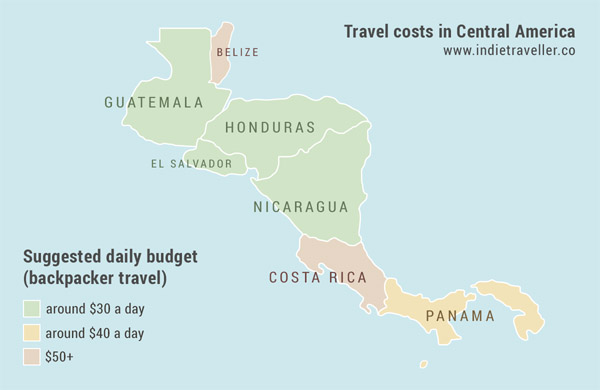
I’m listing prices in US Dollars for convenience. Even if you’re not from the US (I’m European myself) you probably have a better idea of its value than that of a Guatemalan Quetzal or a Nicaraguan Córdoba. In El Salvador and Panama, the currency used is just straight up the US Dollar, and the Belize Dollar is also pegged to the USD (2 BZD is always 1 USD).
For reference, 1 USD is currently equal to: 0.98 Euro, 0.85 Pound Stirling, 1.36 Canadian Dollar, or 1.53 Australian Dollar. (The exchange rates in this text are dynamic and updated daily.)
Only the base travel costs are taken into consideration. Not included are any pre-trip expenses like your flights, travel insurance, tourist visa fees, etc.
| Country | Daily Budget |
| Belize | $50 or more |
| Guatemala | $30 |
| Honduras | $30 |
| El Salvador | $30 |
| Nicaragua | $25 |
| Costa Rica | $50 or more |
| Panama | $40 |
Belize
Dorm bed average: $16
Budget room average: $47
Suggested daily budget: $50 or more
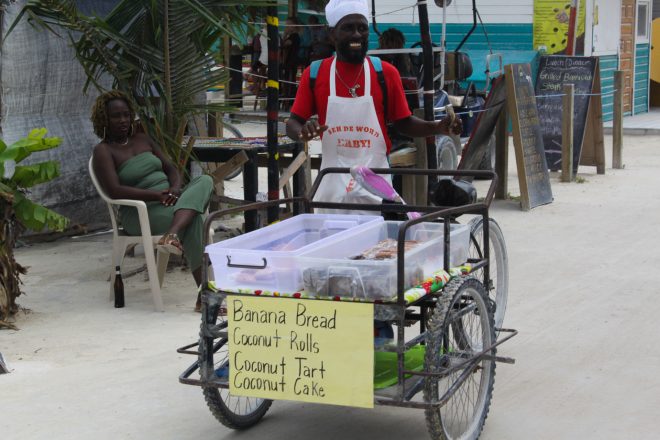
Belize is mostly known as a luxury and cruise ship destination, with prices to match. But if you’re just there to soak up the atmosphere, you can still travel in Belize on a budget. It’s easy to stay on the Cayes for a while and simply enjoy the sunshine and Caribbean vibe.
But splash out on activities and Belize gets expensive, easily on par with Costa Rica or many Western countries. For reference: a snorkeling trip on Caye Caulker costs about $30 USD, a cave tubing trip costs about $75 USD, and scuba diving the Great Blue Hole costs about $330 USD for three dives.
Meals definitely aren’t as cheap as elsewhere in Central America, but look around and you’ll still find budget eats in the $5 – $10 USD range.
Backpackers usually pay Belize a short visit, focusing on Caye Caulker and the border town of San Ignacio. While the Cayes are beautiful, so are cheaper islands in Mexico’s Yucatan Peninsula or Honduras. Mayan temples in Belize are interesting, but there are more impressive ones in cheaper Guatemala.
Belize budget travel tip:
- The suggested budget assumes you will be taking some tours. But if you avoid any organized activities, you can bring it down to a shoestring budget of about $30 a day. You will miss out on the most exciting stuff in Belize, though!
Guatemala
Dorm bed average: $10
Budget room average: $34
Suggested daily budget: $30
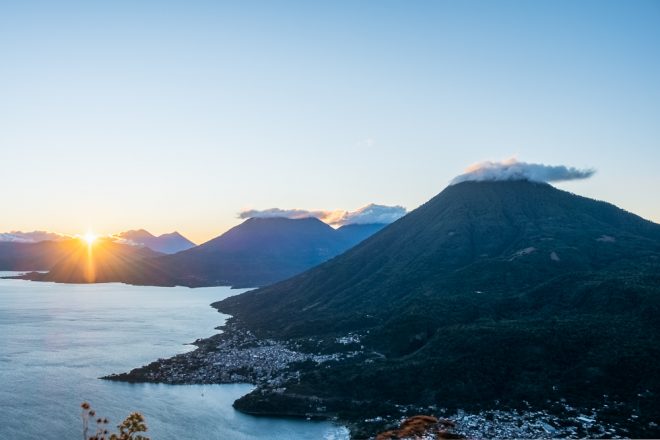
Day-to-day travel costs like lodging and food are incredibly low in Guatemala, with dorm beds starting around $7 and a half-decent private room starting at $20 or so. Meals are rarely more than a couple of dollars, though as usual Western-style food is more expensive.
Entrance to the Mayan ruins of Tikal is $20 though expect to pay another $13 or so for a guided tour. Guided hikes to the volcanoes around Antigua cost between $30 and $60. A full day of activities at Semuc Champey (caving, tubing, swimming around the waterfalls) costs about $40.
As a rule of thumb, if you use the so-called local chicken buses (converted US school buses), you’ll pay about a dollar for every 1 or 2 hours traveled. Faster minivan shuttles (mostly for tourists) cost more. A minivan from Guatemala City to Antigua costs about $15.
Guatemala budget travel tips:
- Flores, Quetzaltenango or Lake Atitlan are great to hang out for a while; on average the accommodation in these places is 30% cheaper than in Guatemala City or Antigua.
- Eat local! Forget about burgers or pizza: there is a lot of inexpensive and yummy Guatemalan food everywhere.
- Chicken buses are cheap but they also aren’t so comfortable. Be sure to ask about the safety situation (they have a poor reputation inside Guatemala City).
Honduras
Dorm bed average: $11
Budget room average: $37
Suggested daily budget: $30
Travel costs in Honduras are at a similar level as its neighboring countries. The Mayan ruins at Copan Ruinas cost about $10 to enter. If you add entrance to the tunnels and a private guide, that cost can go up to $40.
An afternoon of white-water rafting the Cangrejal river costs about $40 per person, while snorkeling and ziplining tours range from about $25 to $50.
The Bay Islands are hugely popular for scuba diving. A three-day Open Water certification course costs about $330 there, which is among the cheapest in the world. Fun Dives are about $30 a pop (if you sign up for multiple dives), so scuba divers will feel like a kid in a candy store here.
Other than scuba diving and Copan Ruinas, Honduras doesn’t have that many established tourist attractions. But there are plenty of sleepy towns where you can enjoy the Latin American vibe and not spend very much at all.
Honduras budget travel tip:
- Book tours and activities when you’re there, not on the internet. Online prices are hugely inflated, particularly for any activities targeting cruise ship tourists. You can often find far cheaper deals in person at local prices.
El Salvador
Dorm bed average: $10
Budget room average: $30
Suggested daily budget: $30
El Salvador one of the cheapest countries in Central America. A dorm room in a well-rated hostel will set you back around $10 USD and a private room about $20-25 USD.
Food is very cheap, especially if you don’t mind the national dish of pupusas which can be found pretty much anywhere. Pupusas are a simple dish that is basically a corn and rice flour tortilla stuffed with cheese, vegetables, beans or meat. A cheese and bean pupusa almost always costs $.50 USD.
A normal meal in a local restaurant will be around $3-5 USD, while restaurants in tourist areas like El Tunco charge $10 USD or more for a main.
El Salvador doesn’t have as many tourist activities as other nearby countries, but as an independent traveler you can explore on your own and really save on costs. Surfing is the most common paid activity. The standard rate for surfboard hire along the coast is $10 USD a day. Private surf lessons are $20-25 USD for an hour.
Nicaragua
Dorm bed average: $8
Budget room average: $24
Suggested daily budget: $25
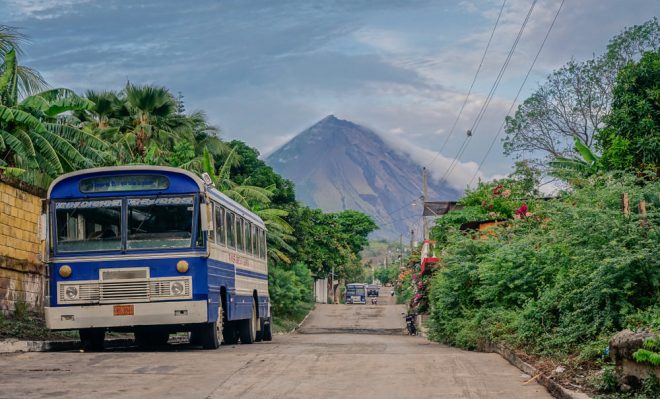
Nicaragua is easily among the cheapest destinations in the world. The average cost of a dorm bed that we’ve calculated is $8, though it’s possible to find beds for as low as $6. Basic rooms with shared facilities in a hospedaje or guesthouses start at about $15.
A Nicaraguan meal of gallo pinto (rice and beans with some sides) costs as little as $1.50 – $2. Even in touristy San Juan del Sur you can get fresh lobster or a grilled red snapper with rice and salad for about $8. Western food will be more expensive.
Transportation is cheap with getting to the remote Corn Islands perhaps being the only exception. This usually takes a domestic flight — returns from Managua are about $160.
Most day trips and activities in Nicaragua (like hiking, surfing, kayaking) cost between $10-30 USD. A volcano boarding day trip near Leon will cost about $25 USD. A guided climb to the top of the active volcano Mt Telica costs about $25, or about double that if you go with the charity non-profit Quetzal Trekkers, which helps disadvantaged youth around the country.
Nicaragua budget travel tip:
- Accommodation on Ometepe Island and the city of Leon is about 40% cheaper on average than in the capital or in San Juan del Sur, making these excellent places to stick around for a while.
Costa Rica
Dorm bed average: $15
Budget room average: $40
Suggested daily budget: $50+
Costa Rica has the most established tourism industry in Central America. It is known for its amazing wildlife parks, eco-resorts, beaches, and adventure sports. Prices are high as many tourists from the United States come to Costa Rica for vacations and are willing to spend. Costa Rica is not just the domain of backpackers but also of honeymooners, families, fishers, birdwatchers, and US retiree expats.
Most costs are about double that of neighboring Nicaragua. A typical meal in a local soda restaurant will cost about $5 to $7 (e.g., a plate of rice, beans, fried plantains and some chicken). Count on spending at least double that for eating in a tourist restaurant.
Luckily, if you use local transportation, you won’t have to spend more than a few dollars for a few hours of travel. The buses are of a more modern standard than the chicken buses of Nicaragua or Guatemala.
Organized activities can eat into your budget very quickly in Costa Rica. Zip-lining and canopy tours cost around $50, while kayak or hiking tours (1 day) are typically also in the $40 – $50 range. A guided two-hour wildlife night hike in Monteverde costs about $30, though some guides charge as much as $50 per person.
Costa Rica has a well-oiled eco-tourism industry, but if you avoid the premium side of things and do the local stuff, you can still travel on a budget there.
Costa Rica budget travel tips:
- Consider staying on the less-touristy Caribbean side where it’s a lot cheaper
- Try to avoid the tourist high seasons around Christmas, New Years, and Easter
- Skip the guided tours and explore nature independently (if you can do so responsibly). You can find walking trails listed on Wikiloc.
Panama
Dorm bed average: $13
Budget room average: $35
Suggested daily budget: $40
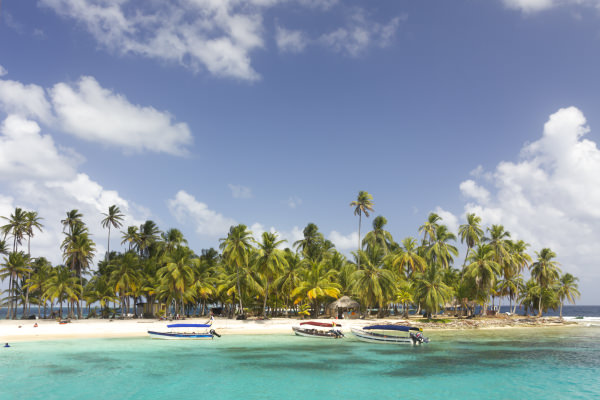
Panama is kind of the mid-budget country in Central America. While accommodation costs are close to Costa Rica, I still suggest a lower daily budget as many tours in activities are cheaper. For example, touring a coffee farm costs about $20, scuba diving is about $30 per dive (which is the same as Honduras), and a visit to the Panama canal costs about $15. For some ideas on where to travel, check out my top places to visit in Panama.
It’s easy to be a budget traveler in Panama, especially on the coasts. One possible bigger expensive is to cruise around the gorgeous San Blas Islands. You can do daytrips, but if you want to travel onwards to Colombia, a San Blas cruise will cost about $400 to $500 for 4 or 5 days. It’s an incredible experience and a better way to go onwards to South America than flying.
P.S. I do my best to keep the prices up to date, but they do sometimes change. Costs are based on my own travels as well as booking site data and recent updates from my contributors. If you spot an error, please share it in the comments.
This post was last updated on February 19, 2020.
Some links may be affiliate links, meaning I may earn commission from products or services I recommend. For more, see site policies.
Cost of Travel in South America – complete breakdown
Over the last couple of years we have visited South America several times with the cost varying greatly depending on length of trip and countries visited. Our longest trip was a 13 month shoestring budget backpacking trip through Latin America. We also explored South America as mid-range backpackers and more comfortable budget travelers. In this article we discuss cost of traveling each country in South America with different traveling styles Backpacking, Backpacking on a Shoestring Budget and Holiday style travel

It is important to remember that there is a dramatic variation in price between countries when planning a trip. Bolivia, Equador and Peru are traditionally seen as the cheaper countries to travel, each extensively traveled by a large numbers of budget travelers. Chile, Brazil and Argentina are relatively more expensive, almost reaching European prices. Colombia is sort of mid-range between the two groups and the cost of travel in Venezuela is so low it is in a budget travel category of its own. Be aware that crime is a very realistic consideration when traveling here and purchasing and organizing anything is difficult in this torn apart country.
In this post
- Travel budget for every country in South America
- Budget for
- Backpacking
- Shoestring Backpacking
- Holiday style travel
Table of Contents
South America on a SHOESTRING BUDGET
-Traveling on a very tight budget we spent $3881 in 275 days (over 8 months) so an average budget of $14.11 each per day. We camped a lot, hiked many of the most popular trails on the continent independent and did a lot of hitchhiking. This was in 2016, so even when adjusting at a very steep inflation rate it is still possible to do this for less than $20 per day.
Backpacking budget is not only dependent on price!
-The cost of travel on a shoestring budget in each country is not only dependent on price. Some examples; Chile is an expensive, but safe country that is very camping and hitchhike friendly and it is possible to hike independent. In contrast Bolivia is a cheap country, but crime can be a problem and activities are expensive. Consequently we spent more per day in Bolivia than Chile.
South America on a TOUR
Traveling solo or figuring everything out for yourself is not everybody’s idea of fun, there are organised overland tours exploring South America, where all you have to do is enjoy the ride. Check out some of world renowned company, G-adventures’ programs.
Lima to Buenos Aires – an epic adventure: beginning in Lima and ending in Buenos Aires, 35-full days. You’ll hike the Inca Trail, cross the Salt Flats of Bolivia by 4×4, and feel like a sophisticate sipping wine in Argentina. Along the way, you’ll engage with local cultures with a small group of other young travellers to back you up.
South America on a BACKPACKING BUDGET
-A Comfortable backpacker’s budget when sleeping in a hostel dormitory bed, cooking for yourself or eating in cheap local restaurants, being selective on activities and traveling with public transport should be around $35 per day, so $1000 per month.
HOLIDAY BUDGET South America
-Giving an estimate for holiday travel is not really possible; double the backpacking figure for a comfortable, budget holiday trip, double again for traveling in more luxury. I try to give some prices for individual countries.
Tours South America
It is strongly advised to do book popular activities ahead, specially if you have limited time or travel on an itinerary. All travelers are different, we discovered this awesome page where G-adventures grouped tours according to the style of travel making it super easy to start searching for the perfect package!
Travel Budget per country in South America
- Argentina
- Holiday $60-100
- Backpacking $30-40
- Shoestring $20
- Holiday $50-100
- Holiday Backpacking $30-40
- Shoestring $20
- Holiday $80-120
- Backpacking $35-45
- Shoestring $25
- Holiday $100-150
- Backpacking $40-50
- Shoestring $20
- Holiday $40-80
- Backpacking $35-45
- Shoestring $20
- Holiday $40-80
- Backpacking $30-40
- Shoestring $20
- Holiday $50-70
- Backpacking $25-35
- Shoestring $15
- Holiday $60-100
- Backpacking $30
- Shoestring $20
- Holiday $ 70-100
- Backpacking $50 – 60
- Shoestring $25
- Backpacking $10
Comparing Cost in South America through the Big Mac Index
The Big Mac Index compares the economy of different currencies by comparing the cost of a Big Mac in different countries. You can see according to the Big Mac Index Uruguay is the most expensive country with a Big Mac costing slightly less than it does in the US, Argentina is the cheapest country.

The price of a Big Mac in various South American countries.
How to choose accommodation online
We recommend using Booking.com to book accommodation it is how we do it most of the time;
-check for accommodation with a rating above 8 in your price range
-make sure the location is good, if you are willing to spend time on transport it is usually a bit cheaper
-check that the property has many reviews, often a place has a rating of 10 given by 3 friends of the owner that stayed there, I try to go for more than 50 reviews
-read the reviews! Focus on things that are important to you
Want to see what places we think are the absolute highlights of South America?
Excellent books to help you plan
- – Great guidebook, many tips and facts, small print, thin pages. Read the reviews – Awesome starting point for planning a trip to multiple countries.
- For Inspriration: Salt & Silver: Travel, Surf, Cook -this book blends traveling, surfing, and the food cultures of Central and South America together through the travel stories of two young, adventuresome guys. : Things I wish I had known before I rode my motorcycle to Mexico, Central and South America by Michelle Lamphere (2015-09-05)
ARGENTINA travel cost
At the time of updating this post (November 2018) Argentina is a cheap to travel again! With the exchange rate going from ARS 17 to 37 for one USD in less than a year goods and services priced for locals dropped in price by about 50%. I am not going to go into the yo-yo state of Argentina’s economy, but in our visits here went from cheap too expensive to cheap again. Until December 2015 the Argentinian Peso had a fixed exchange rate. Similar to Venezuela this created a huge US dollar black market where you could buy 50-100% more pesos per dollar. This stopped when Argentina got rid of the official exchange rate as far as we are aware. Argentina, like Chile, is safe, with top quality products and services, the closest you will find to European in South America. You can find bargains now on all local produce, meals in local restaurants, drinks in local bars, Argentinian wine and beer, even Argentinian beef is cheap and expect to pay less for museum admissions, taxi and bus rides and local guides and excursions.
Mendoza and Bariloche are regarded as the most expensive places to travel in Argentina and hostel prices here was definitely higher than in Buenos Aires. Mendoza is renowned for its wines, but tasting Malbecs at different estates is definitely not a budget activity, expect to pay $150-200 for an organised tasting tour of the 3 major wine areas; Maipú, Luján de Cuyo, and Uco Valley. Doing it independent you can do it for about half, but will definitely see and taste less.
Flights and hotels are priced in dollars, so here you are not going to find massive bargains.

Argentina, it takes careful traveling to see these amazing sites on a budget! South America travel budget
Travel Budget for Argentina
- Backpacker’s budget
- $30 per day
- $60 – 100 per day
- $15 per day (no this is not a typo, read on)
We spent ARS 4238 ($ 212) in 17 days, thus ARS 297 ($ 13.97) each per day including all food, transport and other expenses. During our last visit to Argentina the peso was much stronger, we still managed to backpack it on a very frugal budget by hitchhiking, camping and couchsurfing, like Chile it is a safe country allowing to travel in such a manner.
FOOD
- Food is definitely one of the highlights in Argentina. They have a reputation for good steak, wine and mate and this is well deserved. Steak in a restaurant and on the barbecue was first class.
- A nice Bife de Chorizo (sirloin steak) is about ARS 500 ($13) in a restaurant in Buenos Aires.
- Argentinians are addicted to Dulce de leche (caramel/boiled condensed milk), big containers are cheap. We ate lots of dulce de leche on Maria biscuits during hikes. Ice cream and alfajores sweets is something not to be missed! The top of the range sweets Cachafas Afajores and Freddo ice cream is worth buying once to taste. Falling back on Grido ice cream and Guymallen alfajores for a fraction of the price is a good budget strategy.
TRANSPORT
Despite the favourable currency for traveling the bus prices that I find online is still high. A bus from Santiago to Bariloche is about $70 for a 24 hour bus ride, not that much cheaper than what we experienced a couple of years agol The buses are very comfortable and by taking a night bus you can save on accommodation.
We broke our hitchhiking records in Argentina by traveling almost 4000 km in 2 rides from Punta Arenas in Chile all the way to Buenos Aires. This trip would have cost us $180 by bus. I will not recommend hitchhiking around the cities it took us 2 days to get out of Buenos Aires!
ACCOMMODATION
In Buenos Aires a dormitory bed in a hostel costs $6-10. A budget double room starts at $25. Camping at El Chalten costs about $5 per day, a dormitory bed in a hostel here starts at $10.
VISA FEES FOR ARGENTINA
There were not visa fee for Russians or South Africans. Australian, US and Canadian passport holders do not require a visa, there used to be a reciprocal fee to enter Argentina, I understand that was recently cancelled.
BUDGET ACTIVITIES
- Hike and Camp at El Chalten, the route and camping on route is free.
South America Tours – Explore Argentina with G-Adventures
Looking to experience amazing highlights of Chile and Argentina? Visit coastal Valparaíso, get active in the adventure-sport mecca of Pucón, and journey to a genuine gaucho ranch outside of quaint, lakeside Bariloche, before finishing up in the iconic “don’t cry for me” cosmopolis of Buenos Aires. Get yourself to this southern part of the world and go home recharged.
BOLIVIA travel cost
Bolivia is another South American country with a lot to offer adventurous tourists. It is known as the cheapest country in South America and is thus great to travel if you are on a budget. If you love to get your adrenaline pumping there are some unique opportunities in Bolivia, one of the easiest 6000m peaks to climb, cycle the most dangerous road in the world and do some spectacular hikes.
Food and accommodation were cheap in Bolivia, but activities and tours were expensive like in all other countries. We were discouraged from hiking and camping on our own, due to muggings and robberies. So traveling on a shoestring budget Bolivia ended up costing us more than many other countries on the continent. If you however travel by bus and stay in hostels during your travels Bolivia will probably be your cheapest country.

Bolivia -The Uyuni Salt desert was one of the highlights of South America!
Travel Budget for Bolivia
We spent BOB 2020 ($ 294) in 15 days, thus BOB 135 ($ 19) each per day including all food, transport and other expenses, but if you only subtract the cost of the 3 day Uyuni tour, Bolivia cost us less than $14 per day.
ACCOMMODATION
- Dormitory bed in a nice hostel in $7
- Double room in budget hotel $25
- Stay in luxury 5star hotel from $200
FOOD
- Similar to Peru a set menu “menu del dia” at local restaurants is good value for money at around 20 BOB ($3). It is normally a main course, a drink and sometimes a small desert.
- Want to eat a Bolivian style set meal gone upmarket? Try ‘Popular Cocina Boliviana’ in La Paz. Bolivian food gone Gourmet style, great price for what you get at about 50 BOB ($7) for a set meal
- We often bought food at the market and cooked for ourselves, vegetables some interesting and delicious fruit was very cheap here. You can usually find a meal at the market anytime of the day, we enjoyed the breakfasts.
- You have to eat a couple ofsalteñas(the Bolivia version of empanada) or tucumanas (a deep friend salteña) 3BOB ($0.50)
- Don’t drink the tap water in Bolivia.
TRANSPORT
- Roads are quite dangerous in Bolivia use a reputable company such as MEM or El Dorado
- Cost for a one way bus ticket between La Paz and Sucre an 11 hour, 700km ride are as follows:
- 45 ($6.50) for a seat on a local bus.
- semi-cama seat (140-degree reclining seats) Bs 117 ($17)
- full cama seat (180-degree reclining seats) Bs. 180 (US$26)
Popular Activities in Bolivia
These activities are pricey, but why come if you are not going to experience these things?
- Cycle the ‘death road’ cost is about $80
- Salar de Uyuni tour of the salt flats
- Climb the 6000m peak of Huayana Putosi prices vary between $150 – $300
SALT FLATS TOUR SALAR DE UYUNI
You can do this independent if you have a motorbike, bicycle or Jeep. Otherwise like us you will have to take a tour. It was expensive, but amazing. The standard tour takes 3 days and most tours take you to the same sites. The cheapest tour we could find was $93 (BOB 645) with and additional $29 (BOB 206) for park fees. This significantly inflated our budget. Most premium tours cost between $150 – 200
BUDGET ACTIVITIES
- In La Paz take a collectivo BOB 6 ($1) and go and walk around the beautiful Valle de la Luna (Moon Valley) entrance is BOB 20 ($3).
- Go to the interesting witches market in La Paz, it is free.
- In Sucre walk to “7 Cascadas” (7 Waterfalls) outside the city.
South America Tours – See Bolivia with G-Adventures
Bolivia Discovery – 11 Days La Paz to La Paz. From La Paz, the highest capital city in the world, travel to the crest of the Andes and the middle of nowhere for three days of incredible off-road exploration of the Uyuni Salt Flats and surrounding desert altiplano. Take the road less travelled and meet locals for an immersive cultural experience that few travellers get to know.
VISA FEES
US and South African passport holders do require a visa. You can apply at a neighbouring country (e.g. Peru) SA passport holders it is free, US citizens $160.
BRAZIL travel cost
Brazil is a fantastic country to travel with some of the most extraordinary places to visit in South America, don’t miss the wild Amazon, the amazing wild life of the Pantanal or the unreal vibe and beaches of Rio de Janeiro. Brazil is not cheap, despite many poor people staying in favelas; food, accommodation and tourist activities are some of the most expensive in South America. Inequality here is massive, similar to my home country South Africa, I could not help to constantly compare Rio to Cape Town.

Amazing Brazil, Iguazu Falls, hiking around Ilha Grande, Rio De Janeiro and two weeks on cargo ships on the Amazon.
Be inspired by the new edition of Insight Guide Brazil, a comprehensive full-color guide to one of the most exciting countries in the world.
Travel Budget for Brazil
- Backpacker’s budget
- $40-50 per day
- $80 to 120 per day
TRANSPORT
Long-distance buses are a convenient, but they are pricey a bus ride from Rio de Janeiro to Foz do Iguazu (19 hours) starting at BRL 270 ($70). Buy your ticket at least one day in advance.
Local public transportation costs 2-5 BRL per ride. Uber works well in 11 Brazilian cities.
We did hitchhike sometimes, but getting rides in Brazil were not always easy and we sometimes ended up taking the bus.
ACCOMMODATION
- Dormitory bed in a nice hostel in Rio starts at about BRL30 ($8)
- Double room in budget hotel BRL 135 ($35)
- Stay in luxury 5star hotel from BRL460 ($120)
The South of Brazil vs the North
The South is much more expensive than the north, our budget was $15 avg until we reached Rio! There are some “must see” tourist attractions in and around Rio de Janeiro that are expensive, e.g. cable car up to Sugarloaf Mountain BRL120 ($30), entrance Christ the Redeemer statue BRL 43 ($11) if you hike up it is a bit cheaper, entrance Foz do Iguacu BRL 65 ($ 17)
BUDGET ACTIVITIES
- Cruise down the Amazon on a slowboat.
- Do a free walking tour in Rio de Janeiro.
- Free in Rio.
- go to Copacabana beach
- Walk around the favelas
- Go to Parque Lage.
VISA FEES FOR BRAZIL
UK, South African and New Zealand passport holders do not require a visa for entry into Brazil. $160 USD, Canadians $65 USD, and Australians $35 USD. need visas.
about our travels in Brazil
South America Tours – explore Brazil with G-Adventures
Wonders of Brazil – From the cobble stoned streets of colonial Paraty to remote interior wilderness, uncover the wonders of Brazil in two exciting weeks. Experience Iguassu Falls — a series of falls so massive it straddles two countries and so intriguing you’ll need two days to fully appreciate the view. Not to be outdone, the Pantanal wetlands are teeming with wildlife like caiman, jaguar, and exotic birds. Finally, trade early morning songbirds for some samba in Rio and the rhythm of the beach. This adventure provides natural and cultural highlights and the best Brazil has to offer.
Travel Insurance
Insurance is essential on a long trip exploring South America. Some problems with standard travel insurance companies; does not cover long term trips since they don’t see it as traveling, you can not take out insurance while traveling, no extending insurance on the road and it often does not cover ‘dangerous activities’ like diving and climbing. Check out what we recommend for your trip Insurance for your travels
CHILE travel cost
Chile was our favorite country traveling in South America, we spent 3 months exploring from the Atacama desert in the north to the south of Patagonia. The landscapes are jaw dropping, from the driest desert in the world to the amazing mountains and glaciers of Patagonia. We did quite a few amazing hikes in Patagonia and if trekking is your thing, add this place to your bucket list. Torres Del Paine is the most famous hike around here for a good reason, many people walk it but it is truly spectacular. Food, accommodation and transport all make Chile more expensive than some of its neighbours.
Lonely Planet’s Chile & Easter Island guidebook published October 2018, up-to-date advice on what to see and skip, and what hidden discoveries await you.

Chile – picking so few photos of over 2 months that we spent in this amazing country is harder than traveling here on a $13 per day budget!
Travel Budget for Chile
- Backpacker’s budget
- $40-50 per day
- $100 to 150 per day
- $15 per day (no this is not a typo, read on)
We spent CLP 653 600 ($ 979,50) in 82 days, thus CLP 11 970 ($ 11.95) each per day including all food, transport and other expenses
It is an expensive country, but an amazing place to backpack on a budget. How could we travel here with so little money? Camping, hitchhiking and couchsurfing. Chilean people are unreal, we have many stories about their fantastic hospitality. We never used public transport in Chile hitchhiking thousands of kilometers, it was safe and easy and we met some amazing people. We did many multi-day hikes here and because we did it on our own it was very cheap.
TRANSPORT
Transport is a major expense when traveling here, the buses are quite expensive, especially when you get to Patagonia. The Carraterra Austral is mostly gravel road so the trip from Puerto Montt to Puerto Natales takes 34 hours by bus, costing $80.
Flying is sometimes a better option than the bus, if you go to Puerto Natales to hike Torres del Paine it is a lot faster.
Hitchhiking worked fantastic for us in Chile all the way from the most Northern to Southern towns, San Pedro de Atacama to Villa O’Higgins.
VISA FEES
Citizens of US, UK, Canada and Australia and South Africa do not need visa, 108 other countries do so check before going. Australians have to pay a $117.
ACCOMMODATION
This is the country to travel with a tent, there are campsites everywhere. When there were none we did some ‘bush camping’ and even pitched our tent at a fuel station. We made great friends couchsurfing and off course saved a lot on accommodation in the cities this way. If you look at hostel prices you can see that if you do not camp accommodation in Patagonia will cost you a pretty penny.
- Camping CLP 2000-7000 ($3 – 10)
- Hostel in Santiago. Bed in dormitory – $9, Standard double room – $36
- Double room nice budget hotel Santiago- $80
- 5 star hotel Santiago – $200
- Hostel in Coiyhaique (Patagonia). Bed in dormitory – $22, Standard double room – $60
South America Tours – Patagonia Adventure with G-Adventures
G-Adventures adventure tour – Imagine almost three weeks packed with every activity you can think of and then some! Trek through perfectly picturesque Patagonia, wake up early for whitewater rafting, hike through crisp mountain landscapes on Torres del Paine’s renowned W Trek, and bike, raft, and smile to your heart’s content. Your adrenaline reserves will be tapped by the end of it all.
COLOMBIA travel cost
We loved Colombia, nice people, the people are very friendly, the food is amazing, there are some awesome activities to get your adrenaline pumping and the best is that it is very affordable.
What an adventure we had traveling in Colombia; I am a coffee junkie and following a coffee the world’s best coffee from bean to cup in the mountains was amazing. Beautiful country to explore a variety of interesting places from colonial cities, great beaches and the Amazon to a beautiful desert.
Lonely Planet Colombia (Travel Guide) – up to date travel guide released August 2018
- Backpacker’s budget
- $35-45 per day
- $40 to 80 per day
- $20 per day
- We spent 1 851 135 COP ($636) in 31 days, thus 59 714 COP ($20.50) each per day including white water rafting, paragliding and a plane ticket from Bogota to Leticia.

At $20 per day each our budget was on the high side for Colombia, but we did awesome things. Camping at the airport helped with our budget! South America travel budget
FOOD
- Meal at a local restaurant COP 11300 ($3.50)
- Meal at a midrange restaurant COP 32 380 ($10)
- McDonald’s meal COP 16 000 ($5)
We spent very little on food by buying groceries in the supermarket and cooking in the hostel. You can see exactly how we regulated our budget in our Colombia Budget Backpacker’s Guide.
ACCOMMODATION
- Backpacker Hostels
- Dormitory bed varied between 15 000 and 30 000 COP ($5-$10)
- Awesome Hostels
- Bogota – awesome hostel for $5 – Casa Capita Hostel
- Cartagena – well rated, well priced – Casa Hostal el Prado
Great Budget Hotels
- Bogota – beautiful, comfortable, modern – Hotel El Dorado Bogota
- Cartagena fantastic atmosphere, spacious – Hotel Manglar 421
- Stay in Luxury
- Bogota – treat yourself – Sofitel Bogota Victoria Regia
- Cartagena – amazing refurbished colonial mansion – Tcherassi Hotel
TRANSPORT
Local transport is really cheap. Three major cities in Colombia (Bogota, Cali, Medellin) have mass transit systems similar to those in Europe and the United States. Bogota’s system is called the TranMileno and – bright red buses almost like a subway. Medellin has a subway, rides less than a dollar. Public transport in the city $1-2 per day
Buses between cities in Colombia are actually quite expensive. A bus from Bogota to Medellin will cost around COP 65 000 ($20)
The budget airline Vivacolombia is a cheap way to move long distances.
Uber is available in cities and is cheaper than taxis.
ACTIVITIES
- Adventure activities was well priced in Colombia, it was the only country we decided to splurge.
- white water rafting ($40)
- paragliding ($20)
- Scuba diving – there are some cool spots from Cartagena with nice wrecks and marine life.
- Don’t miss a tour of a coffee plantation starting at about 15,000 COP ($5) – Don Elias in Salento is fantastic.
VISA FEES FOR COLOMBIA
UK, US, Canadian, South African, Australian and New Zealand passport holders do not require a visa for entry into Colombia for stays of up to 90 days. Visas can be easily extended for an additional 90 days
TIPS
- Transport was expensive. We saved a lot on accommodation by taking night buses for longer distances, thus saving on a night’s accommodation. We did not hitchhike in Colombia (no reason).
- Cook for yourself, food in supermarkets was good and very cheap.
- Visit museums on Sundays, many are free.
- Get a ‘Hola Hostel’ card, they are free, good discounts.
BUDGET ACTIVITIES
- Free walking tour in Medellin – excellent!
- Hiking around San Gill – well marked 3 day trail to do on your own.
- Walk around in The Tatacoa Desert.
- Coffee tasting in Salento, cheap not free, but a must for a coffee lover.
South America Tours – Colombia with G-Adventures
G-Adventures Colombia 9 Day Bogota to Cartagena – Where to go if you only have a week to experience a truly unique part of the world? The answer: Colombia. If you think a week isn’t enough to tour the beaches, coffee regions, and metropolitan cities of this reemerging country, think again — this trip makes it possible. Check out the resurgence of culture, art, and food in Bogotá and Medellín, dive deep into the Caribbean vibe in Cartagena, and enjoy the Latin-Caribbean fusion of flavours in local cuisine. All this in only nine days. Start packing now.
ECUADOR travel cost
Located between Colombia and Peru, Ecuador straddles the equator on the Pacific side of South America, Ecuador is a small, but diverse country most famous for the Galapagos Islands, which sparked the genius idea of evolution in Charles Darwin. It is perhaps the cheapest place from which the Amazon jungle can be explored. In Quito you can straddle the equator or go shopping for authentic souvenirs in the Otavalo market 3 hours away. Up for adventure? Climb the 5897m Cotopaxi volcano or ride down from 4500m on a mountain bike! The great thing about Ecuador for backpackers is that it is fairly cheap to travel here with lots of well-priced accommodation and adventure activities.
- Travel Holiday $40-80
- Backpacking $30-40
- Shoestring $20

FOOD
- You can eat at a local restaurant for $3-5 and in the markets for less than $2.
- European meal (hamburger/pizza) around 10-12 USD.
- For a meal at a mid-range restaurant about $25
TRANSPORT
Long distance buses are a good deal for less than $2 per hour travelled.
ACCOMMODATION
In Quito a dormitory bed in a hostel starts at $4. A budget double room from $12 and you can stay in a 5 star hotel for $130
VISA FEES FOR ECUADOR
United States, Canada and most European countries can travel to Ecuador visa free for up to 90 days.
BUDGET ACTIVITIES
- Unfortunately going to the Galapagos islands is a very pricey exercise even which will cost at least $1000 even for the most stingy nomads. Flights, conservation fees and ferries alone is round $500.
- If you shop around you can do a 3 day local Amazon tour for about $120. With a higher budget you can do a 5-day tour and explore the Ecuador Amazon and live locally, admire rainforest wildlife, learn about shamanic practice and do several outdoor activities – isn’t it an amazing way of getting to know another country?!
- Stand over the equator at Quito
- Go to the Otavalo market.
- Hiking independent
South America Tours – G-Adventures Galagapos wild life
The Galápagos Islands aren’t just all about cruising! Over a week’s time and beginning and ending right in the heart of the action (the islands, of course), you’ll stay active by snorkelling, hiking, and exploring the diverse terrain before slowing things down with wildlife exploration in the company of an expert Naturalist Guide. With plenty of options to stick around after the trip’s done (or show up early for some independent adventuring beforehand), this is the perfect express trip for a most excellent Galápagos experience. G-Adventures Galapagos
PARAGUAY travel cost
I will definitely not call Paraguay ‘a tourist paradise’, one of the least visited countries in South America, with little travel infrastructure only has a handful of known tourist destinations. Getting ‘off the beaten track’ and experiencing local culture are the most popular tourist draw cards in this small land-locked country. The most well-known cities are Asuncio, the capital and popular point of entry by plane and Ciudad del Este, the second biggest city on the border with Brazil and Argentina and well known for shopping, mostly cheap and knock-off or fake goods. We entered the city from Iguazu. English is not widely spoken, so a basic knowledge of Spanish is very handy around here
Travel Budget for Paraguay

We spent PYG 191 000 ($ 34) in 3 days, thus 63 666 PYG ($12) each per day including all food, transport and other expenses.
We did not spend much time in Paraguay. I bought some electronics in Ciudad del Este for cheap. The Itaipu dam is located close to the city, the second biggest dam in the world is a nice site to go to from the city, the tour is free. The dam is one of the seven Engineering Wonders of the World. The massive network of waterfalls that they flooded to build the dam would have been even nicer. Apparently it was bigger and more impressive than Iguazu
ACCOMMODATION
- Dormitory bed in a nice hostel start at $13
- There are very few hostels, they are quite expensive
- Double room in budget hotel $30
- Good value for double rooms if you are two people sharing
- Stay in luxury 5 star hotel from $65
- For $65 you can get a double room in a top 5 star hotel
TRANSPORT
Extensive bus network connecting towns and cities, don’t expect luxury buses. Taxis are well priced, motorbike taxis are cheap.
PERU travel cost
Peru is still one of the cheaper countries to visit in South America hosting some of the continent’s most famous attractions. The two most popular highlights are without a doubt the Inca ruins of Machu Picchu and the multi day hiking trail ‘The Inca trail’ leading up to this archaeological wonder. Peru has so much more to offer, visit the fascinating man made islands of Lake Titicaca, explore the Amazon from Iquitos, check out Lima or go surfing at Mancora. Peru is a dream destination for trekking with a staggering array of trails winding through the Andes. These spectacular mountains offer a lot more than just the Inca trail; we spent a month in Cusco alone, doing some fantastic trekking like Salkantay, Choquequirao and Ausangate. If you do these treks independent it is dirt cheap, what an awe-inspiring experience!
Great help in doing some planning Lonely Planet Peru (Travel Guide)
Travel Budget for Peru
We spent PEN 2008 ($592) in 37 days, thus Sol 54.20 ($ 15.95) each per day including all food, transport and other expenses.

Trekking in Peru was very cheap, we had an amazing time and saw some unreal places!
For us doing a lot of hikes made Peru cheaper not more expensive. Doing independent hikes costs were minimum. During hikes accommodation was free and food was very cheap.
ACCOMMODATION
- Dormitory bed in a nice hostel in $6
- Double room in budget hotel $40
- Stay in luxury 5star hotel from $120
FOOD
- The best place for lunch is a menú at one of the local restaurants. A Peruvian menú is a set meal including a starter (normally soup or a small salad), a main course, a drink and sometimes a small dessert. The price is about PEN 10 ($3)
- Are you a foodie? Go to ‘Central’ restaurant in Lima, the nr 1 restaurant in South America and nr 4 in the world, a bit above our budget at round $200 for a 17 course meal, but we heard about the magic chef Martinez serves here, culinary art taking you from 20m below sea level to 4000m above.
- Some hostels include breakfast, usually simple (yes read not enough). We drank a lot of tea in the mountains of Peru. Most hostels give unlimited free coco tea since it helps with altitude sickness.
- McDonald’s meal about PEN16 ($4.50)
- Local beer PEN 6/ $1.8
TRANSPORT
- Bus travel in Peru is well priced with different options and prices. A bus ride from Lima to Cusco in a nice bus with wifi starts at about PEN80 ($25) for the 22 hour ride.
- Shorter trips of around 2 and a half hours were about PEN 10 ($3).
VISA FEES
TIPS
- Machu Picchu entrance is $47 including Machu Picchu Mountain. Machu Picchu is amazing despite the 4000 tourists a day, a must see.
- I recommend skipping the Inca Trail, hike a different route. There are many amazing hikes around Cuzco and several options to hike to Machu Picchu. The Inca Trail is the most famous and most touristy, this does not make it the best. See our Salkantay to Machu Picchu, an alternative routearticle for more on the topic.
Peru is an amazing culture and adventure experience; activities will be your biggest expense, go for it! It will be an experience you will treasure forever.
BUDGET ACTIVITIES
- Hike independent
- carry your own bag and use a map instead of a guide, there are some of the world’s best hikes in the Peruvian Andes!
- Take a slowboat trip in the amazon from Iquitos to Leticia. Awesome activity when traveling South America on the cheap.
South America Tours – G-Adventures Iconic Peru travels
G-Adventures Peru – This adventure offers up an intriguing combination of beauty and contrasts in scenery, wildlife, and cultures, whether you’re scanning the canopy for wildlife from the comfort of our intimate and exclusive G Lodge Amazon or climbing the ancient trail of the Incas to Machu Picchu, situated in the heavens of the Americas. Because we run our own treks, we can ensure the fair treatment of our porters and the quality of food and equipment which leaves you free to enjoy the beauty of the region.
URUGUAY. travel cost
Uruguay is known as an expensive country with top quality beef and people living on Mate, sort of a super Argentina, this is not too far off. The most popular places to visit in the country are Montevideo, Punta del Este, Colonia, Punta del diablo, and Cabo Polonio Rocha. The country is predominantly a summer beach destination, which is great since going to the beach is free. Kitesurfing is a popular activity and don’t miss eating a local steak and drink some matet (the mate straw is a cool gift to take home). Most travelers arrive in Uruguay by ferry straight from Buenos Aires ($56). The ferry is expensive and we decided to hitchhike the long way around, it took a long time. The country’s small size and efficient bus system allows for easy exploring of the whole country.
Travel Budget for Uruguay
We spent UYU 3954 ($ 140) in 7 days, thus 564 UYU ($20.50) each per day total, we did some hitchhiking and camping.

The sculpture on the beach- Los Dedos (“the fingers”), a famous work by Chilean artist Mario Irarrázabal.
FOOD
- Eating in restaurants is very expensive, but like Argentina eating a steak is one of the must do things in Uruguay. Chivito (Uruguay’s classic steak sandwich) goes for about US$10, eating in a midrange restaurant $25 with a drink and double that for eating in a top end restaurant with wine.
- Lunch in a local restaurant cost about UYU 350 ($12). A Mcdonald’s meal is about UYU 280 ($10). Shopping and cooking the prices are not that crazy and staying in a hostel with cooking facilities is the cheapest way to travel here.
ACCOMMODATION
- Dormitory bed in a nice hostel start at $10
- Double room in budget hotel $35
- Stay in luxury 5star hotel from $160
TRANSPORT
All the cities and towns in Uruguay are connected by an extensive network of bus routes. The distances are short and we were surprised that transport is relatively cheap. The inter-city buses are modern, clean and comfortable and it was awesome that these buses have quite good Wi-Fi.
- Local bus ride in Montevideo US$1
- Long-distance bus rides are about US$7 per 100km travelled.
VENEZUELA travel cost
Traveling to the beautiful, dangerous and destroyed country of Venezuela is strongly discouraged by every foreign office around the world. Once one of the richest nations in South America, with massive oil reserves, due to political corruption and civil unrest it became a country with massive social and economic problems.
We had a great time traveling here late 2015, the country was already in distress and empty shops, corrupt police and non-existent service made it hard to travel here. It was however very cheap, we were traveling on cents, if it is ethical to travel to Venezuela is another hot potato.
We spent VEF 107 999 ($155) in 29 days, thus VEF 30723 ($5.31) each per day including all food, transport and other expenses.
THE CURRENCY ISSUE
When we were here, September 2015, the official exchange rate was $1=B6, on the black market you could however buy B700 with $1! This means that a Coke will only cost 27c at the black market rate, but you will pay $33 for the same Coke at the official exchange rate! If you bring cash it is an unbelievably cheap country to travel. If however you draw money at an ATM or pay by credit card at the official rate it is maybe the most expensive country in the world. Unfortunately this downward spiral has just continued for Venezuela with inflation at over 800 000% in October 2018
Want to know and understand what is going on in Venezuela? read this insight full and well received book – Crude Nation: How Oil Riches Ruined Venezuela

Because of the exchange rate in Venezuela, tourists with US dollars have a lot of money. These are 50B notes (almost $10 notes).
BUDGET AND PRICES
Our average budget was $5.31 a day each all inclusive.
VISA FEES FOR VENEZUELA
US citizens need visa, $30 for 90 day multiple entry visa
BUDGET ACTIVITIES
Most things, don’t get robbed.
More about our travels in Venezuela
THE GUIANAS travel cost
Guyana, Suriname and French Guiana collectively called the Guianas are three territories located on the North Eastern coast of South America . Getting to the Guianas is not easy and the countries are expenses, they are skipped by most travellers in South America for these reasons. We briefly set foot in Guyana hiking in Venezuela, but since it is European territories we did not want to go through visa processes to travel here. Since we did not travel through the Guyanas I am including this based on what I heard and found online.
– French Guiana is a part of France, and thus of the EU, here you enter the EU while still standing in South America. There are not many touristy sites in the country.
-Travel Budget French Guiana
French Guiana is a very expensive country, even as a budget traveller you will find it hard to get away by spending less than $80 per day. Since there is no backpacker facilities expect to pay over $50 per night for accommodation.
– Suriname was formerly known as Dutch Guiana, the smallest country in South America only has a population of 550 000, Dutch is the official language and people drive on the left hand side. Over 90% of Suriname is covered in primeval rainforest and there are some awesome fauna and flora to experience here, river dolphins, 1000 pound leather back turtles laying their eggs on the beach and the gold footed tamarind monkeys.
-Travel Budget Suriname
Suriname sounds like the cheapest of the three, you should be able to find accommodation for under $25 and get away with a budget of round $60 per day.
– Guyana located between Venezuela and Brazil, bordered by the Atlantic Ocean in the north is South America’s only English speaking country. This year (2018) Guyana was a popular destination under travel bloggers. Traveling independent I heard Guyana is a very difficult country to get around in. Visitors go to see the incredible nature, with sites like the tallest free falling waterfall in the world (Kaieteur Falls). There is an incredible diversity of animals in the Amazon jungle and savannahs in Guyana, you can see the massive freshwater fish, Arapima, giant anteaters, piranhas, tarantulas and even jaguars if you are a birder the more than 900 species of exotic birds makes this a bucket list spot.
-Travel Budget Guyana
You should be able to find accommodation in a guesthouse for about $40 per night. and get away with a budget of round $70 per day.
Good stuff to Pack
Good travel and hiking Backpack – you want something that is easy and comfortable to carry, that is a good hiking pack if you are going to Patagonia, but that is easy to open like a good travel pack.
This is hard to find, a great hiking backpack that is not just top loading.
Travel Security Money Belt
Nobody will know you have money on you! Travel Security Money Belt
Water is not alway drinkable and bottled water can be expensive, we save a lot of money with our life straw in a bottle This amazing device is super handy if you are going hiking independent.
Travel money guide: South America
Hola or Olá? Cash or card? Learn about the right travel money to use in South America.
In this guide
Travel money type
Compare
Locations
Compare more cards
Top picks of 2021
South America is made up of 12 different countries, each with different currencies. For example, Colombia has Colombian pesos, Argentina uses Argentinian pesos, Brazil the real and Peru the nuevo sol. As such, bringing a combination of cards and cash is essential. The Capital One VentureOne Rewards Credit Card is a decent choice as far as travel cards go.
Here are the types of payment options available and other financial tips for navigating South America.
Our picks for traveling to South America

Travel card with no annual fee
Capital One VentureOne Rewards Credit Card

Send and receive 50+ currencies right from your phone

28+ currencies and real exchange rates. Crypto deposits aren’t FDIC insured.
Travel card, debit card or credit card?
It’s important to take a combination of travel money options wherever you go in the world, but this is especially true for a trip to South America. Having a combination of cards and cash to use as a backup is necessary to ensure you won’t run into any spending roadblocks on your vacation.
Credit cards, debit cards and travel cards are widely accepted in South America. You’ll have no problem using your Visa or Mastercard at any business that can accept credit cards, however, American Express is typically only accepted at high-end businesses.
Stick to a Visa or Mastercard so you can make withdrawals and payments in a variety of places.
These are your options for spending money in South America

Compare credit cards for travel
Using a credit card
Look for a credit card designed for travel that doesn’t charge foreign transaction fees to save money on international purchases when traveling through South America. The Capital One Venture Rewards Credit Card is a good choice, but there are plenty of other options on the market as well.
If you’re a frequent traveler, use a travel credit card that pays miles for each dollar you spend. This way you can maximize rewards and use those miles towards the purchase of your next flight.
- Some credit cards waive overseas ATM fee
- Protected by PIN and chip
- Accepted worldwide
- Features such as complimentary travel insurance and reward points earning
- Cash advance fees
- Higher spending limit that could make budgeting difficult
Compare travel credit cards
Narrow down top travel credit cards by welcome offers, rewards and annual fees to find the best for your budget and financial goals. Select Compare for up to four products to see their benefits side by side.
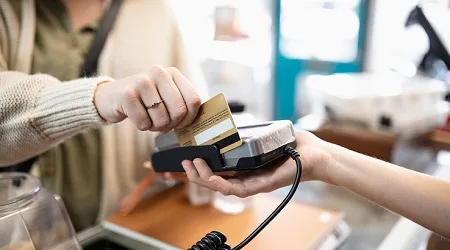
Best international debit cards
Using a debit card
A travel friendly debit card that waives international ATM fees or foreign transaction fees, like one from Betterment Checking , is a smart travel money option for a trip to South America. Look for a debit card provider that is part of the Global ATM Alliance because you’ll be able to avoid currency conversion fees — Barclay Bank and Bank of America are members.
If you’re planning on using a debit card that doesn’t waive ATM fees, take out the maximum amount of money so you don’t have to make as money withdrawals.
- Security with chip and PIN
- Direct access to money
- Save on overseas ATM fee when you withdraw
- $0 account keeping fees if you deposit the minimum requirement
- Unlimited free withdrawals at selected banks
- Currency conversion and international ATM fees

Prepaid travel money cards
Using a prepaid travel card
No prepaid travel cards support South American currencies, so these products shouldn’t be considered for a trip to the continent. Although you can load US Dollars onto these travel money products, acceptance is limited and you’ll pay to convert funds twice.
- Tip: The South American regions of French Guiana off the coast of Brazil and the Falkland Islands adjacent to Argentina use the euro and pound, so you could use a travel card to spend in either destination with no problem.
- Protected by PIN & chip
- Multiple supported currencies
- Emergency card replacement and backup cards
- Accepted worldwide
- Ideal for managing your travel budget
- Most prepaid travel money cards won’t let you load any South American currency
- May charge currency conversion fees, ATM withdrawal fees and local ATM operator fee
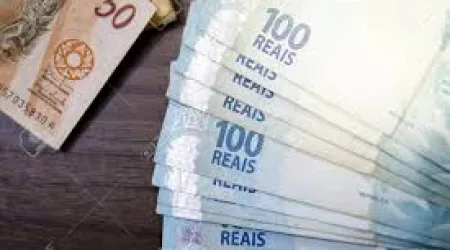
Compare cash pickup services in South America
Paying with cash in South America
South America is one destination where you’re going to need to have cash in case of an emergencies. Although you can use your card in more places now more than ever, there’s no guarantee that you’ll be able to access cash at any given moment — especially outside of major cities.
Where debit and credit cards are accepted can vary greatly depending on the location. You won’t have a problem with a card in the capital cities, especially in countries like Chile, Brazil, Colombia and Argentina for example. However, there are major tourist attractions, like the Amazon, where you’re going to need enough cash to last you for the entire leg of your trip.
- Greater payment flexibility
- Convenience
- Difficult to manage expenses
- Higher risk of theft

Traveler’s checks guide
Using traveler’s checks
Don’t bother taking traveler’s checks to South America. They’re difficult to cash and can be expensive. Also, it is no more secure than using a debit card (ATMs in South America are everywhere), credit card or prepaid travel card.
- Acceptance
- Security
- Can be costly with initial purchase charges
- Not all merchants accept travelers checks
Exchanging cash in South America
ATM withdrawals are by far the most efficient way to get local currency in cash on your holiday. ATMs are located all throughout the continent. If you want to carry cash as an emergency backup, US Dollars are widely accepted if you can’t pay in the local currency.
Refreshing in: 60s | Tue, Nov 22, 10:37AM GMT
Buying currency for South America
It’ll be cheaper if you wait to exchange your money when you arrive compared to converting currency with banks in the US. However, you could always consider using an online money transfer service to send money to your destination and pick it up when you arrive. This option makes getting foreign currency extremely convenient for travelers.
A quick guide to the Brazilian Real
Did you know?
The Brazilian word for the national currency, “real” means both real and royal and all Brazilian coins feature the Southern Cross!
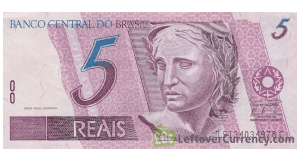

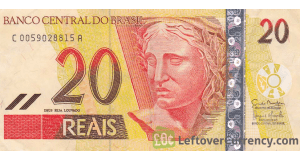

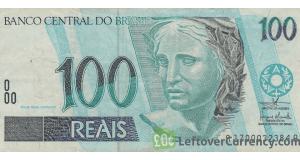
What are the major South American currencies?
- Argentine peso
- Bolivian boliviano
- Brazilian real
- Chilean peso
- Colombian peso
- Peruvian nuevo sol
- Uruguayan peso
- Venezuelan bolivar
The main banks in South America are:
- Banco Do Brasil, Brazil
- Itaú Unibanco Holding, Brazil
- Caixa Economica Federal, Brazil
- Banco Bradesco, Brazil
- Banco Santander Brasil, Brazil
- BBVA Bancomer, Mexico
- Banco Santander Mexico, Mexico
- Citibanamex, Mexico
- Banorte, Mexico
- Banco del Estado de Chile
ATMS in South America
Visa and Mastercard should work at all ATMs where you can see a Maestro, Cirrus, Mastercard or Visa logo on the front of the machine. Always try to use ATMs attached to the side of a bank. And if possible, bring a card from a bank that doesn’t charge international ATM fees, like Betterment Checking.
- Tip: ATMs in the Amazon region of Brazil, some parts of Venezuela and Bolivia may not accept foreign debit cards. Make sure you have enough cash to last you the duration of your stay if you’re visiting these regions.
How much money do I need to bring to South America?
It depends on what country you travel to in South American. Prices in Brazil are more expensive than Ecuador, and Ibague (the 7th largest city in Colombia) is cheaper than Medellin (the 2nd biggest city in Colombia).
Wherever your travel, the continent can be as expensive or cheap as you make it. Below you can find some budget prices for different countries in South America. All prices are in US dollars.
Bogotá (Colombia) Brasília (Brazil) Lima (Peru) Santiago (Chile) Accommodation Hostel dorm bed
$10 per nightHostel dorm bed
$20 per nightHostel dorm bed
$10 per nightHostel dorm
$12 per nightMeals Arepa con queso on the street
$1.50El Negro Food Truck. El Matanza (hot dog)
$4.50Ceviche pescado in a cheap restaurant
$2 -$3Empanada on the street
$1Activities Bogota graffiti tour
Free (donation based on satisfaction)See the city from the top of the television tower
FreeSee the changing of the guards at the Presidential Palace
FreeMuseo Histórico Nacional
Free on Sundays and holidaysPrices are approximate and are subject to change.
Case study: Will’s experience

Case study: Interview with Will about travel money for South America
Will spent almost four months climbing volcanoes, diving and bussing around Colombia, Peru, Bolivia, Chile and Brazil. He started his trip in Central America visiting Mexico and Cuba.
Do you have any travel money tips for South America?
- ATM withdrawals. He says be careful when withdrawing at ATMs. Although nothing happened to Will, he’d heard many stories of other travelers being held up when withdrawing cash. And check your account balance regularly, cards get skimmed quite frequently.
- Cash. Will says make sure you have cash to use in emergencies.
Jeremy Cabral
Jeremy is finder’s Global Head of Publishing & Editorial. Jeremy has been with finder since the very beginning and is part of the founding team working closely with Fred and Frank to build finder.com into the comparison network it is today.
More guides on Finder
Many banks offer checking and savings accounts for teens, and you can even get your own debit card. But you’ll need a parent on the account.
Manage your banking, investing and personal wealth strategy under this Citi® account.
Learn how to buy cryptocurrency in the US and what you’ll need.
7 crypto-friendly banks and alternatives that support your crypto activity.
Support your child’s financial knowledge and teach the important real-life money skills in a safe and controlled way with a kids’ debit card.
Sign up for an account and pay no fees to send quick and easy money transfers to multiple beneficiaries.
A kids’ chores calculator to help you estimate how much paying your kids to complete chores might cost you every week.
Payment statistics show that 25% of Americans believe that cryptocurrency will take over fiat currency according to an online survey conducted by Finder.
Support your child’s financial knowledge and teach the important real-life money skills in a safe and controlled way with a kids’ debit card.
The Sequin card helps build your credit but you can’t withdraw money at an ATM.
Source https://www.indietraveller.co/central-america-cost-of-travel/
Source https://stingynomads.com/south-america-travel-budget/
Source https://www.finder.com/travel-money/south-america